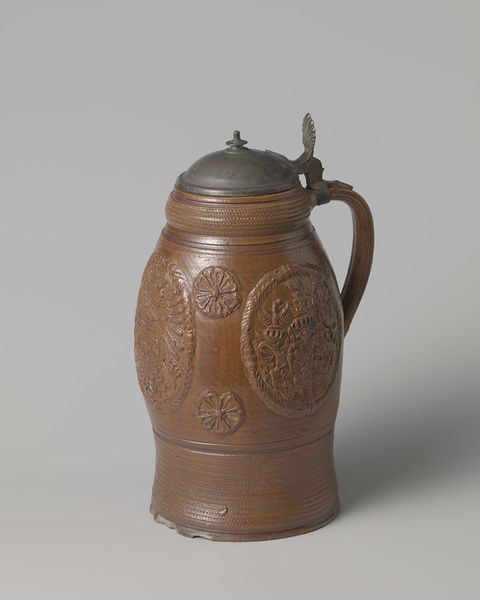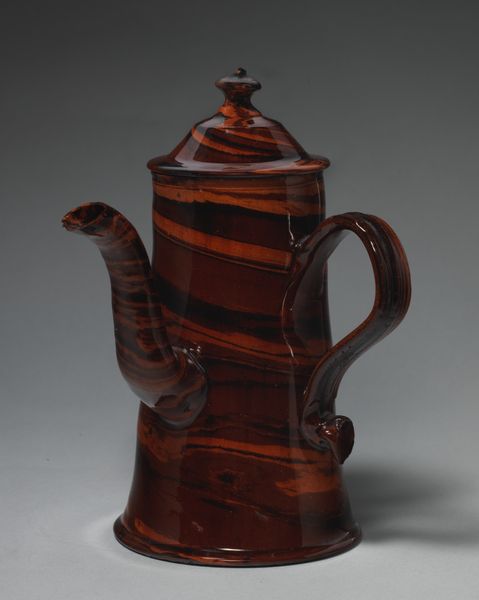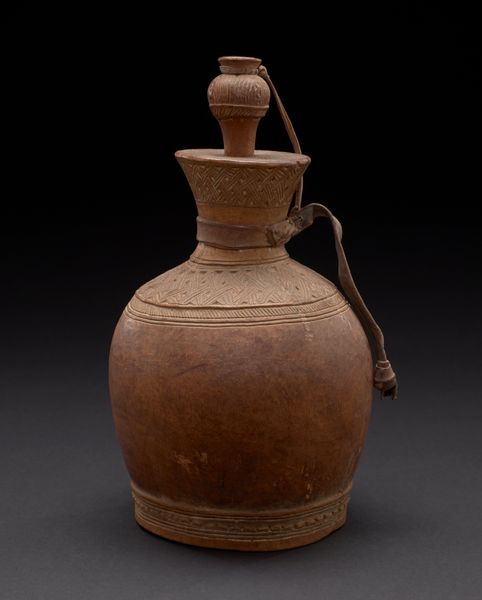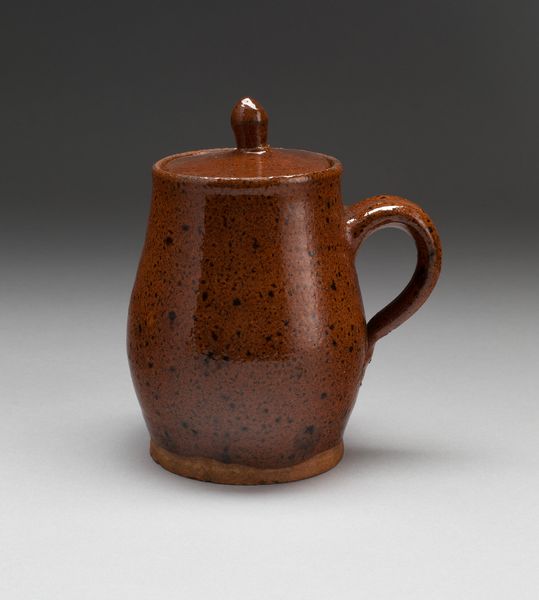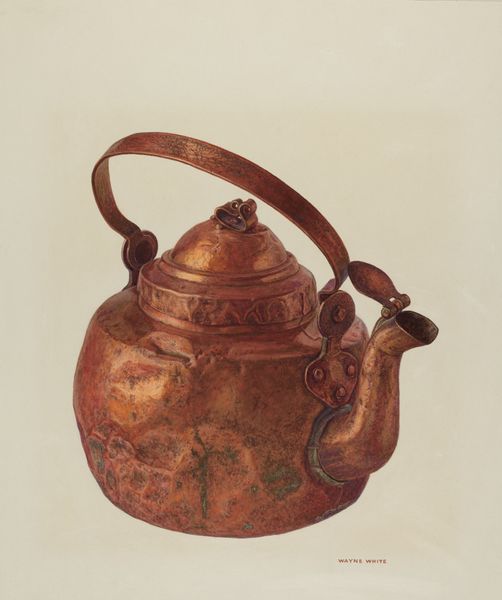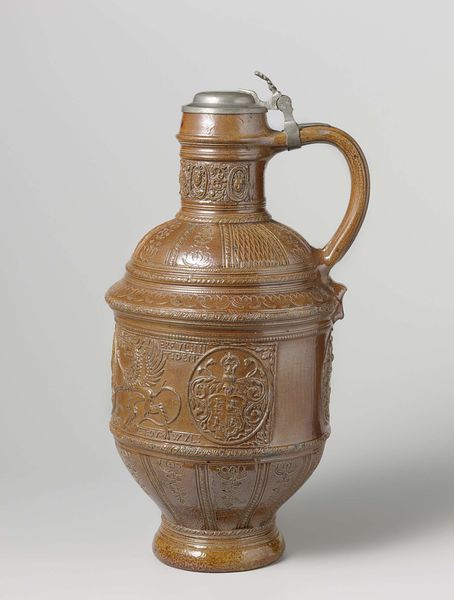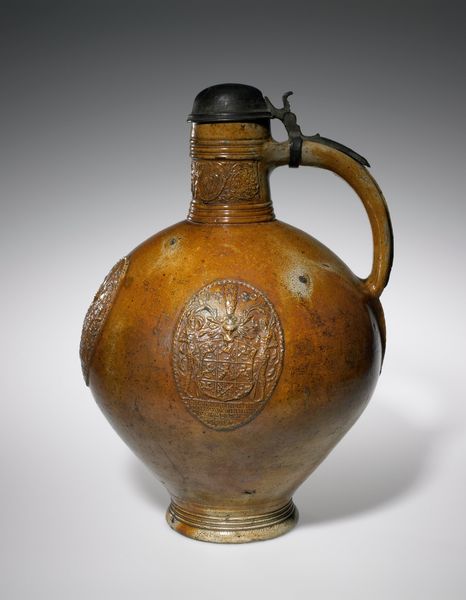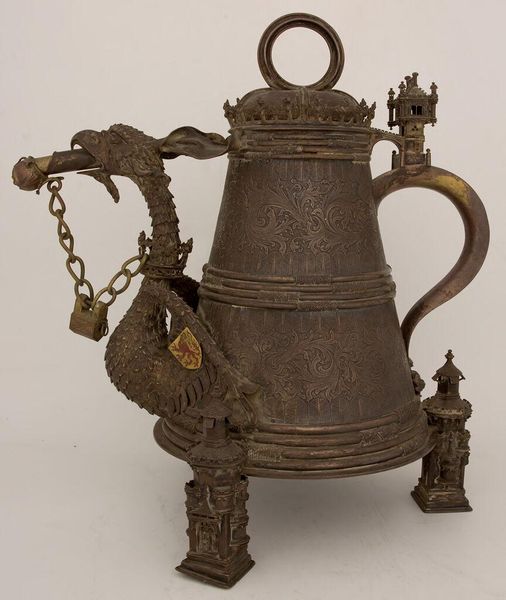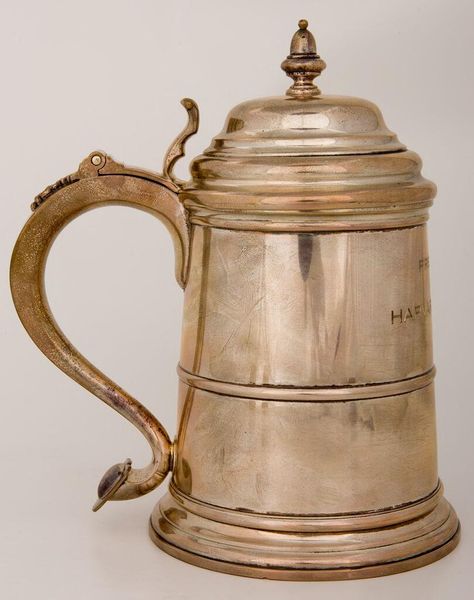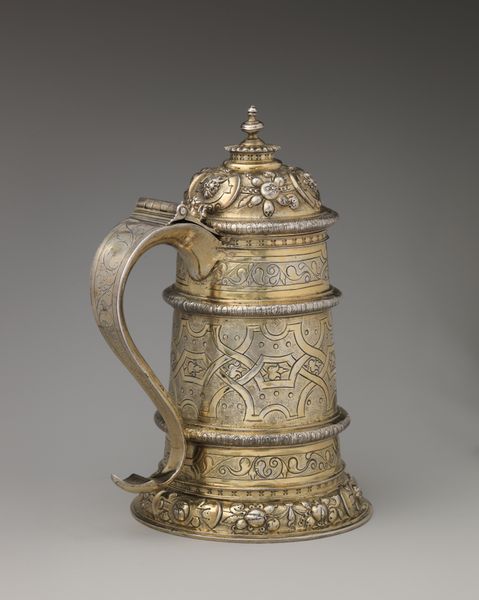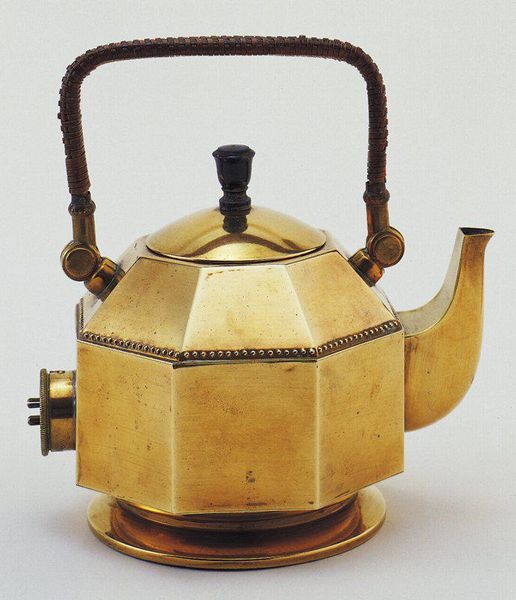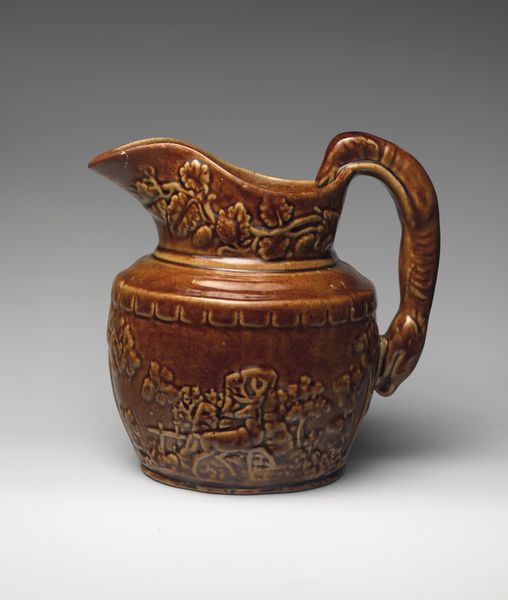
carving, sculpture, wood
#
carving
#
sculpture
#
stoneware
#
sculpture
#
wood
#
decorative-art
Dimensions: 8 1/2 x 5 1/2 x 8 1/2 in. (21.59 x 13.97 x 21.59 cm)
Copyright: Public Domain
Editor: So, this is a Tankard, made around the early 19th century. It's made of wood and stoneware, featuring some pretty impressive carvings. It looks so formal, not exactly something you’d use everyday. What do you see in this piece? Curator: Beyond its function as a drinking vessel, this tankard offers us a glimpse into 19th-century social dynamics and material culture. Its elaborate carvings, likely commissioned by someone of means, speak to the performative aspects of wealth and status. Consider, what narratives were being constructed around the consumption of beverages during this period? Was it simply about quenching thirst, or was something else at play? Editor: That’s interesting, the “performative aspects.” So, like showing off at social gatherings? Curator: Exactly. Objects like this were rarely just functional; they actively shaped social interactions and hierarchies. How do you think gender or race might intersect with the ownership or usage of such a decorative object? Editor: Well, it seems like something only a white, wealthy man would own, given the time period. It looks very masculine to me. Curator: Precisely! And how might its craftsmanship - the very labor involved in its creation - reflect the lives and conditions of those less privileged? Did the maker have agency, or was their creativity suppressed in service of a wealthy patron? Editor: That's a good point. It makes me think about the exploitation of labor, even within art. It’s much more layered than I initially thought. Curator: Indeed. By questioning its origins and social context, we transform a simple tankard into a mirror reflecting complex power structures and social relations. Editor: I'll definitely look at decorative art differently now, thinking about all the layers of meaning embedded in them. Curator: That’s the power of art, isn’t it? To provoke questions and challenge our perceptions.
